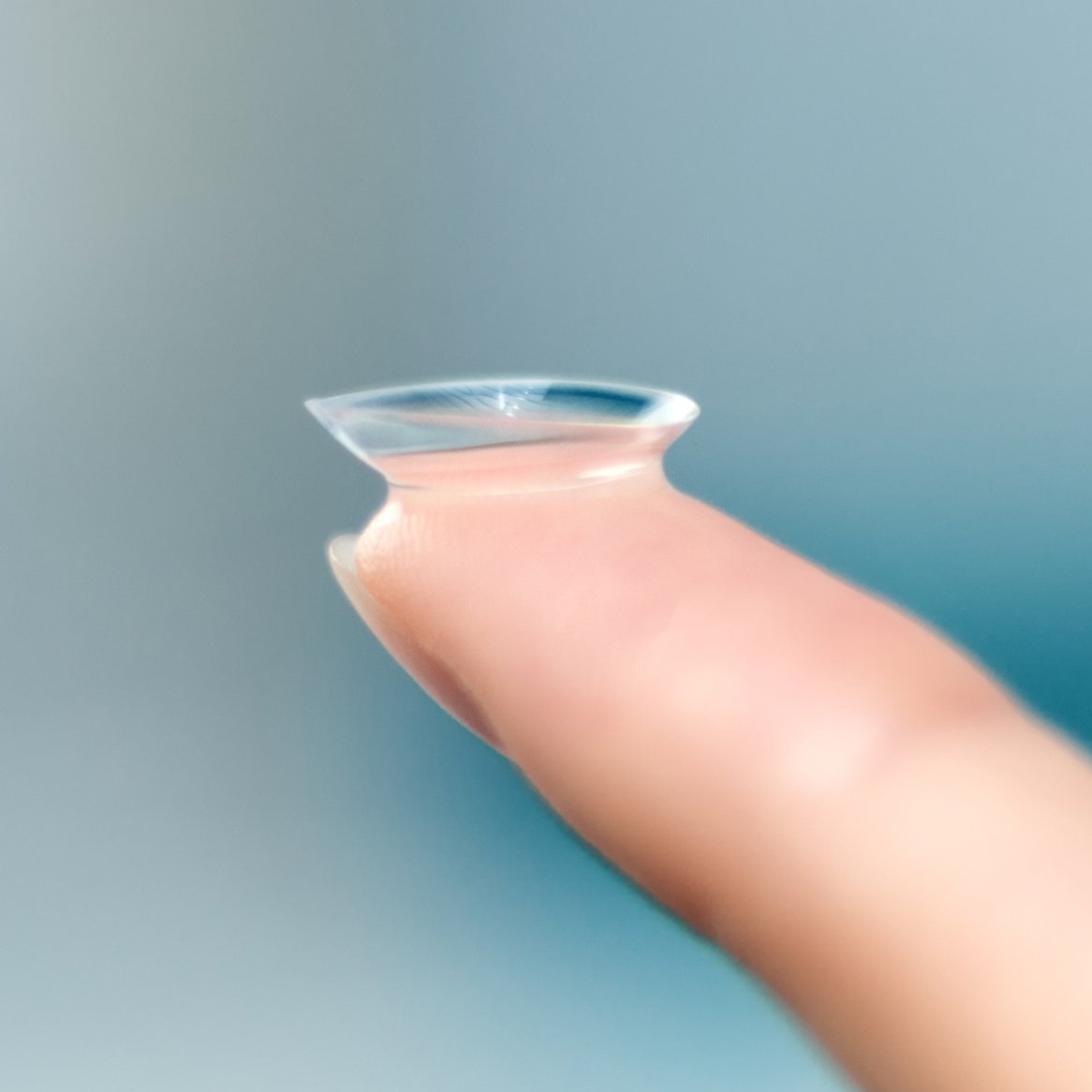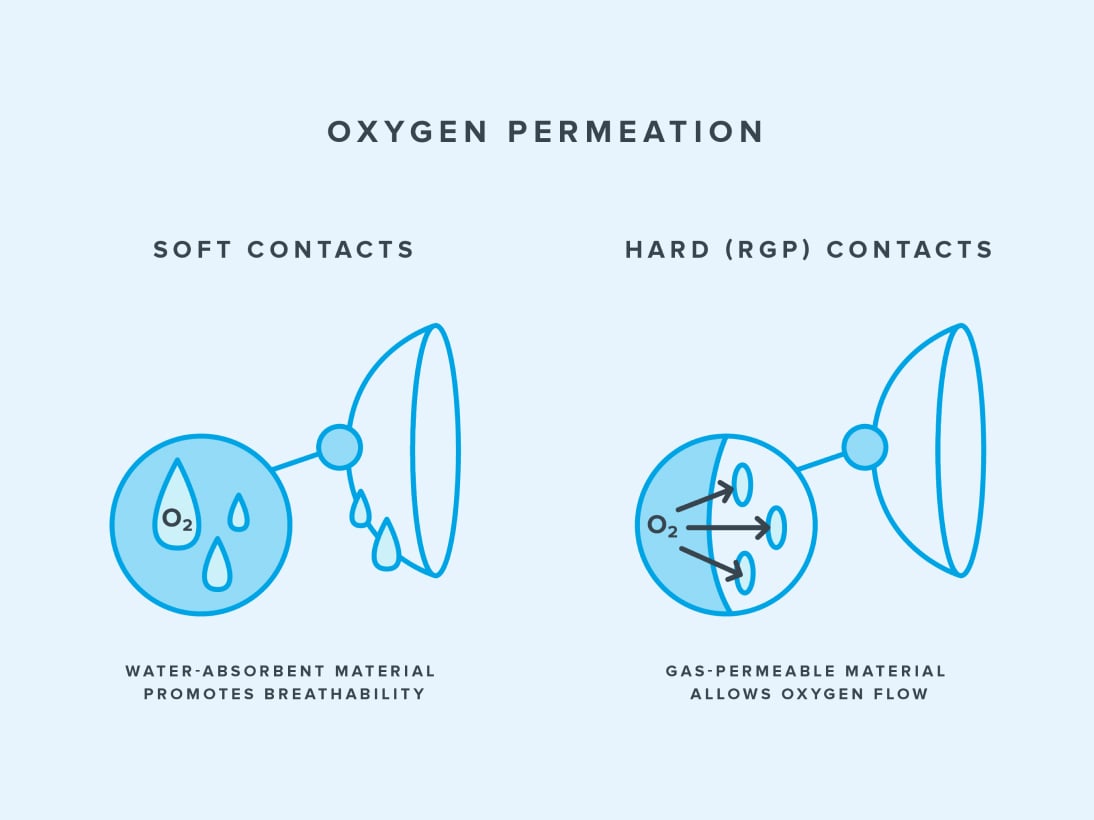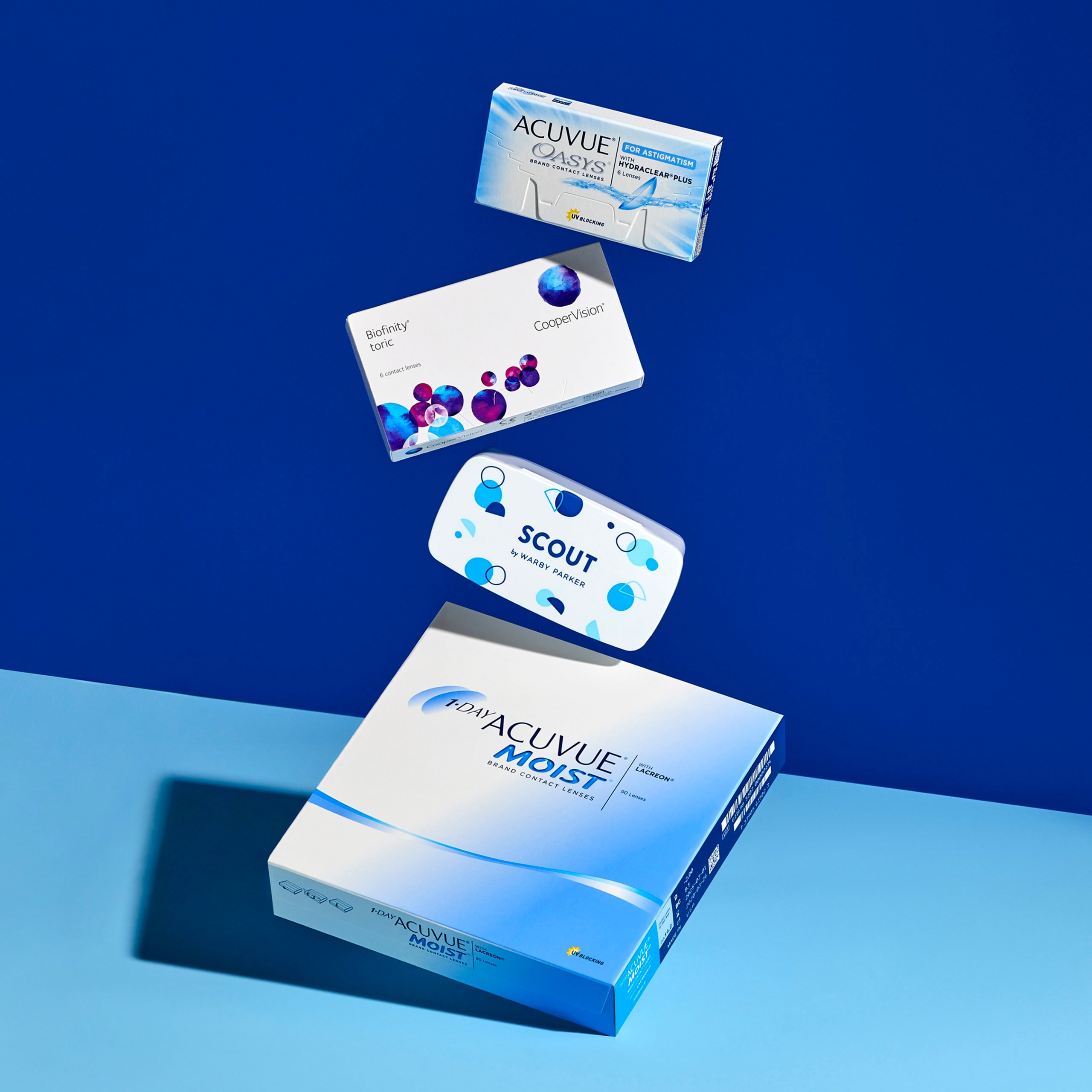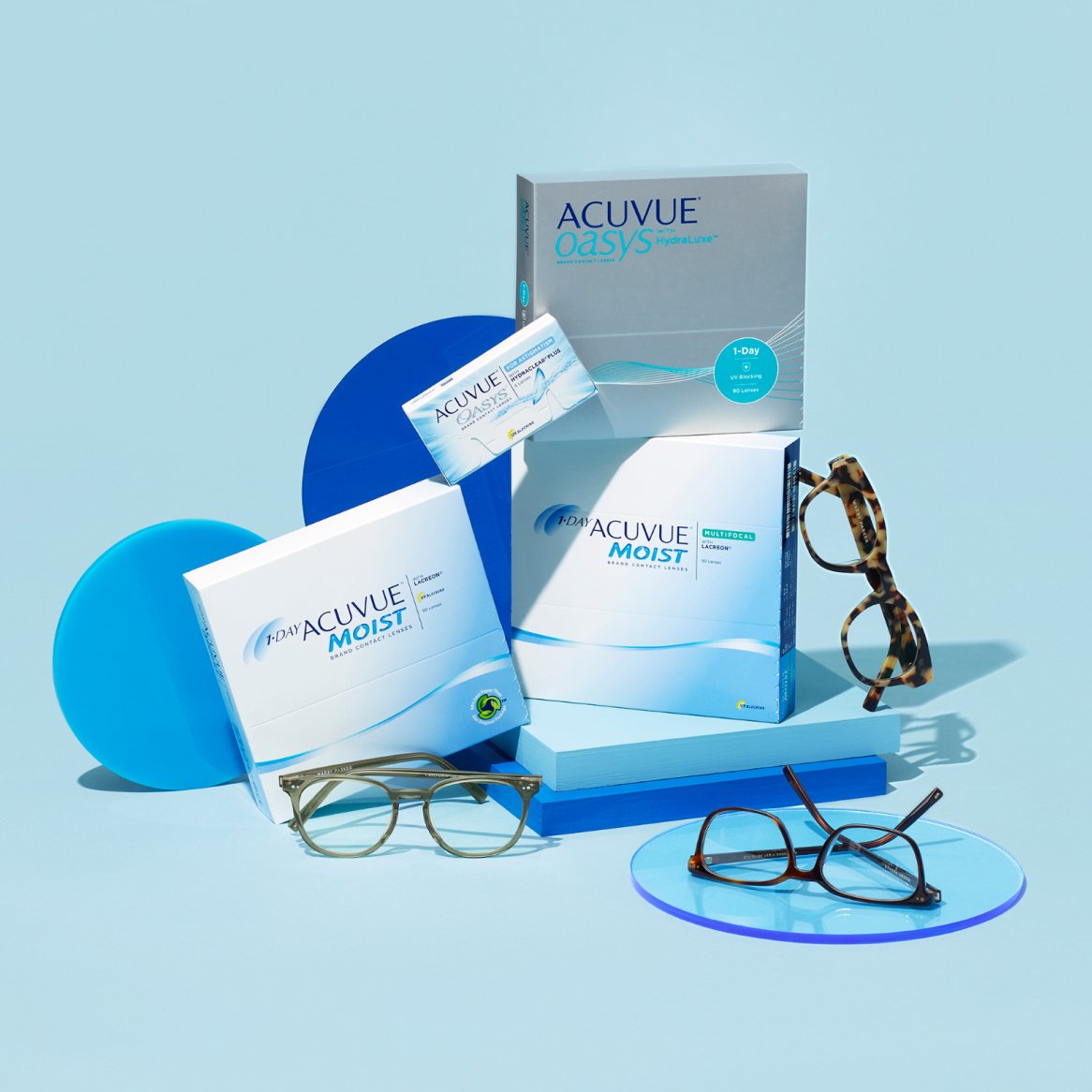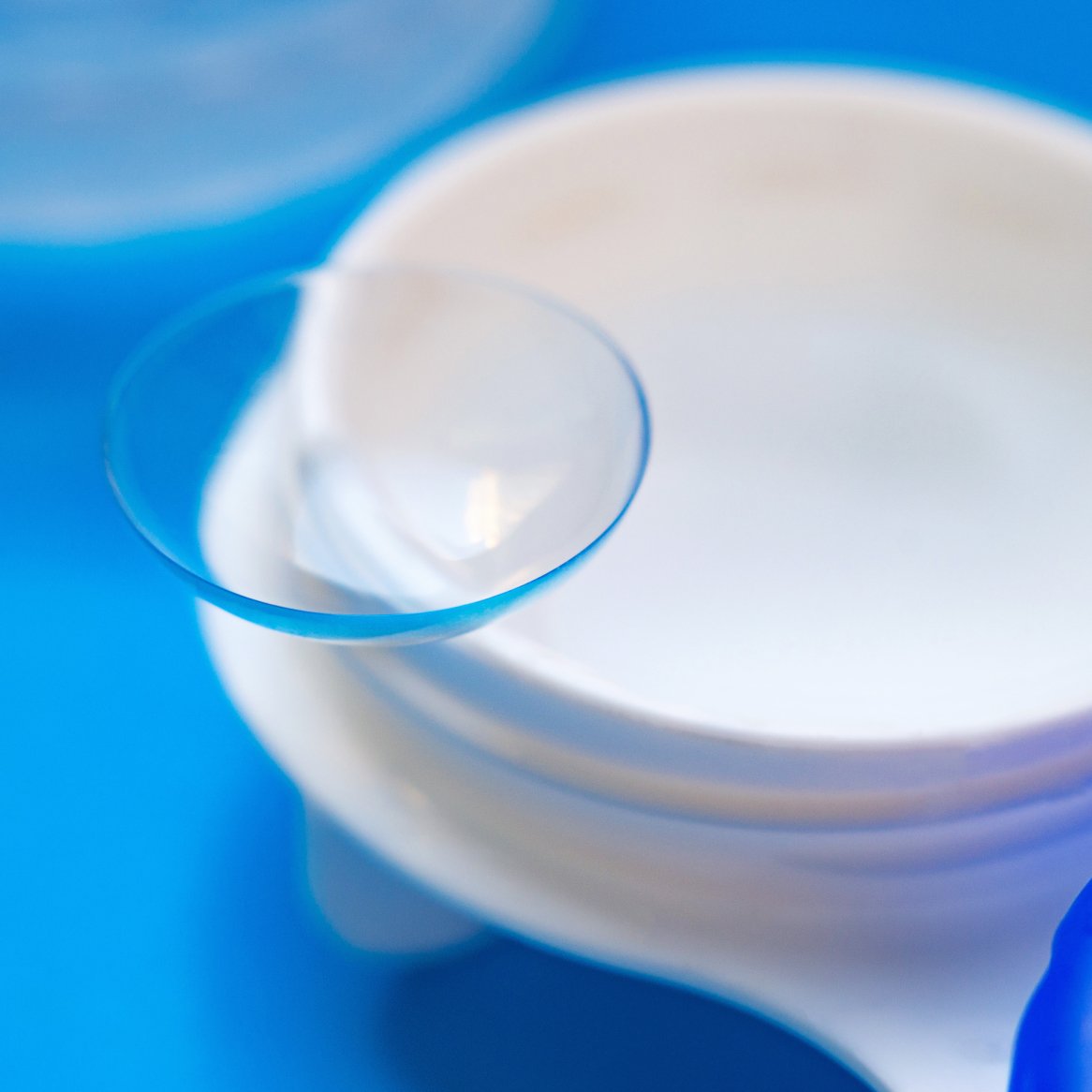Soft, hard, and hybrid contact lenses are all made using types of plastic, but maybe not the kind of plastic that comes to mind when you hear that word. Different types of contacts are made using various high-tech polymers that allow oxygen to flow through to reach the cornea—a necessity when it comes to eye health.
In this guide, we’ll examine the materials used to make contact lenses. But before we dive deeper, let’s also consider where contacts started. Just as glasses have evolved over time, so too have contact lenses.
Early Contact Lens Material
The first “usable” pair of contacts was likely made in 1887 by German physiologist Adolf Eugen Fick. These early contact lenses were made of thick blown glass that covered the entire eye! Needless to say, they were large and uncomfortable and could only be worn for a couple hours at a time.
Thankfully, contacts are no longer made of glass, and we’ve come a long way in their design, comfort, and efficiency.
What Are Contact Lenses Made of Today?
Today, contacts are made with plastic, though soft and “hard” contacts differ in their exact makeup.
What Are Soft Contact Lenses Made Of?
Soft contacts are made of hydrogels, which are hydrophilic plastics. “Hydrophilic” literally means “water-loving.” These plastics are highly water absorbent, allowing them to stay moist and flexible—it’s what makes soft contacts soft.
Soft contact lenses are often categorized by their water content because the “breathability” of the lens (the amount of oxygen that can pass through to the eye) increases as water content goes up. The thickness of the contact lens also tends to increase with higher water content.
Some soft contacts are made with silicone hydrogels for an even higher water content. Contacts that are designed for extended wear typically use silicone hydrogels to ensure they can maintain their moisture.
What Are Daily Contacts Made Of?
Daily disposable contacts are soft contacts made of hydrogels or silicone hydrogels. The same goes for soft biweekly and monthly contacts, though the exact composition of each lens brand will vary by manufacturer.
What Are Hard Contacts Made Of?
Today’s “hard” contacts aren’t as hard as their predecessors—they’re made of rigid gas permeable (RGP) materials. RGP contacts are still often referred to as “hard,” but “semi-soft” or “rigid” would be more accurate terms for them.
RGP materials combine plastics with other materials like silicone and fluropolymers (plastics with the addition of fluorine). Microscopic holes in the material allow oxygen to pass through the lenses, hence the name “gas permeable.”
Before the arrival of RGP materials, the materials used to make contacts were certainly harder. As we mentioned before, the first contact lenses were made with blown glass. Decades later, manufacturers began using another material: polymethyl methacrylate (PMMA).
Unlike the polymers used for soft contacts, PMMA is hydrophobic, which means “water-fearing” (repellant) rather than “water-loving” (absorbent). PMMA lenses are still sometimes prescribed today, but very rarely—rigid gas permeable (RGP) materials are more common now.
Are Contacts Biodegradable?
Contact lenses aren’t biodegradable or compostable. Want in on a little-known fact, though? There’s a free recycling program for old contacts. Recycling contact lenses might not be as simple as tossing them in with your typical household recyclables, but it’s still easy peasy—you just bring them to a drop-off location or ship them in.
Whatever you do, though, please don’t throw your old contact lenses down the drain or flush them down the toilet. Contact lenses can break down into microplastics that pollute waterways and can make their way to other bodies of water or the soil, harming the environment and animal life.
Contact Lens Materials Are as Varied as Your Vision Needs
Many people aren’t aware that they have options when it comes to what their contact lenses are made of. In this article, we discussed the main types of polymers used to make contacts, but even among each type of material we mentioned, there are many specific subtypes (there are many types of silicone hydrogel, for instance).
Talk to your eye doctor if you don’t feel satisfied with the comfort or clarity your contacts are providing—there could be a different contact lens material that suits you better.

